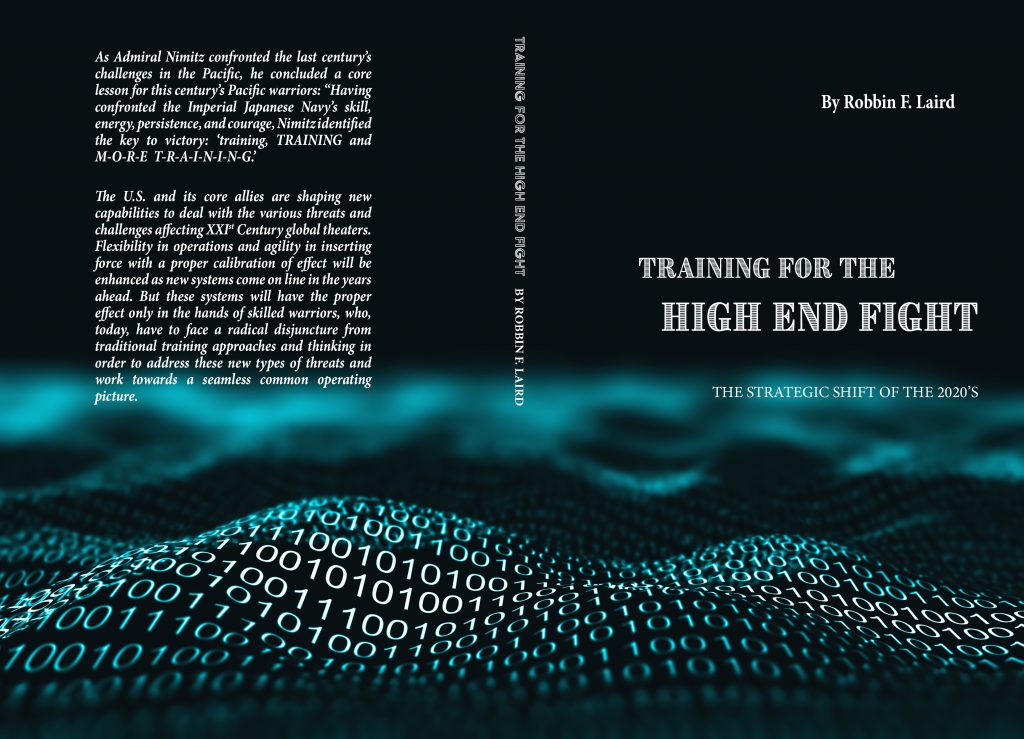By Robbin Laird
The last two International Fighter Conferences, 2018 and 2019, where very different from this one.
And I am not just referring to the virtual nature of the conference.
This fighter conference was less about fighters than about the changing context of airpower in terms of what enables it, how effectors are being delivered and the multi-domain capabilities to which the fighter forces are expected to deliver.
The enablers were a dominant theme in the conference which focused a great deal of attention on the ISR, and C2 systems within which the fighters operate and how a multi-domain force operates and will operate as those systems evolve over time.
C2 for many of the presenters really stood for Combat Cloud, and for the U.S. speakers the focus was on the USAF led multi-domain C2 efforts.
The effectors really revolved around how fighters and the evolving machine enabled ISR and C2 capabilities would change the battlespace and how fighter engagements would change over the decade ahead.
And evolving capabilities were discussed largely in terms of the impact of the F-35 on the maritime force and upon the legacy combat force and in terms of shaping new ways for European nations to collaborate to deliver either a Tempest system of systems or an FCAS system of systems
At last year’s conference several speakers from states facing front line threats from either Russia or China addressed the key issues of how to ramp up their capabilities to defend themselves in the world as it is now, rather than speculating on the future air systems of 2040.
This was largely absent this year, but that does raise a fundamental question from my standpoint.
My travels over the past two years to European, Australian and American air and naval forces have underscored how rapidly capabilities are changing.
And they are changing in a way that speculating about a long-range future in ways that might not happen at all.
What I have seen is that operations, training and development are increasingly being shaped by a cycle of change, notably with regard to the coming of software-enabled aircraft, such as the P-8 or the F-35.
As the systems envisaged in both Tempest and FCAS are clearly projected to be software enabled aircraft, one can certainly pose the question of how innovations with today’s forces will significantly reshape how the future force will be built and what it would look like.
And combat drives significant change.
It is difficult to believe that in the near or medium term that the air forces of the 21st century authoritarians and of the liberal democracies will not directly engage in combat.
Even if the full spectrum crisis management they engage in might well be contained below the threshold of general war, those engagements will lead to lessons learned and reshaping of capabilities.
And those conflicts do not need to be directly between them but through partners or allies using their equipment and we have some of this already in Syria.
Operations will drive training and training will drive development, a point which is at the center of my forthcoming book on Training for the High End Fight: The Strategic Shift of the 2020s.
As before the DefenceIQ fighter conference provided a wide range of insights on the way ahead for airpower, and I will address each of these three elements, enablers, effectors and projected capabilities in separate articles.
With the nature of the virtual conference, the organizers were able to draw in a wide range of speakers and broaden the audience as was forecast by Alexander Stephenson when we spoke earlier this year about the Conference. I think his projections were definitely realized,
Navigating the COVID-19 World: Shaping a Way Ahead for the International Fighter Conference 2020



